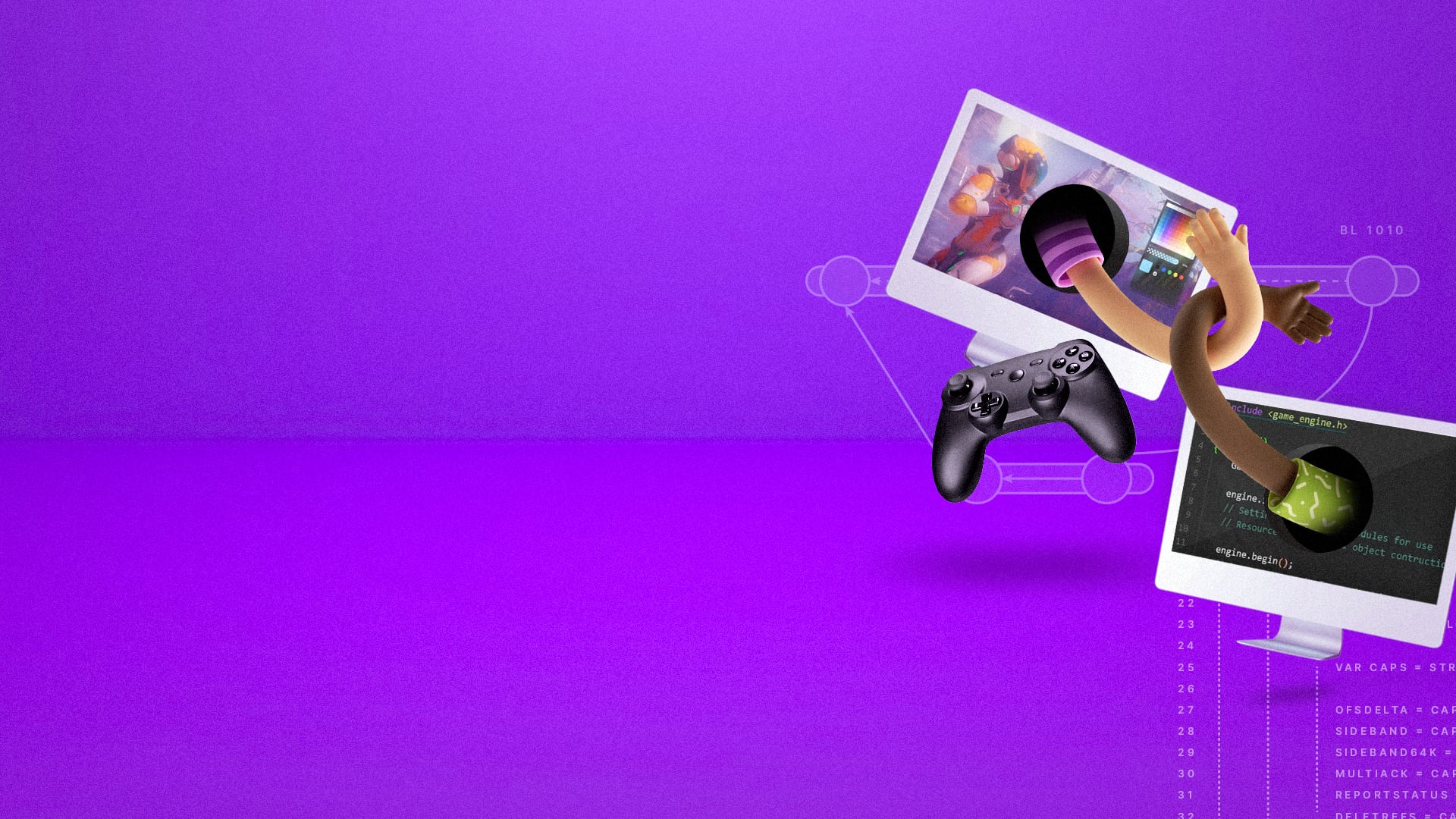

Unity Version Control is a scalable, engine-agnostic version control and source code management tool for better collaboration across disciplines. With superior speed handling large files and binaries, it combines both centralized and distributed workflows, so both artists and programmers can work the way they need to.
This guide covers how to set up Version Control in Unity with any of the following Editor versions:
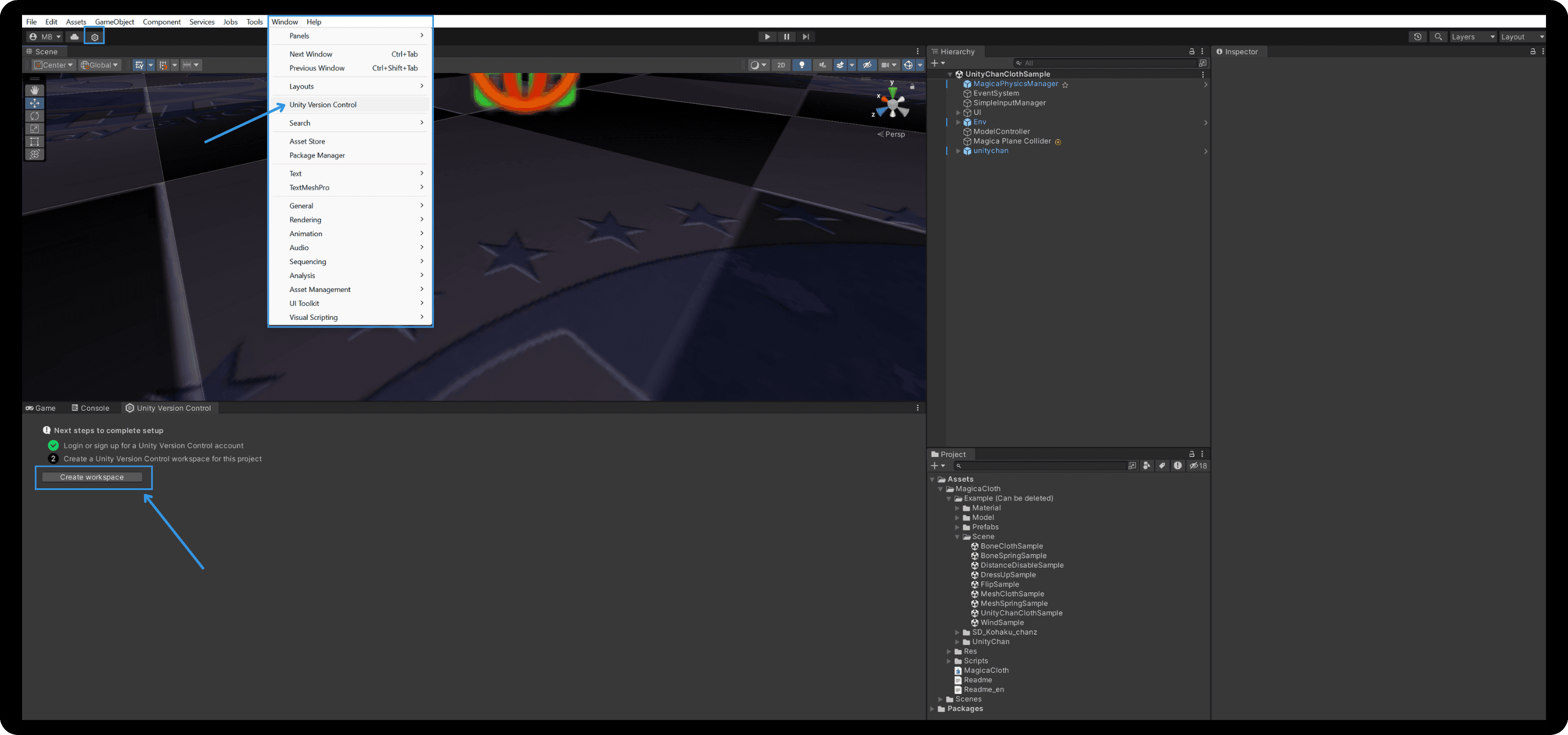
To begin, connect your Unity ID to Unity Version Control and then either select or create a new organization.
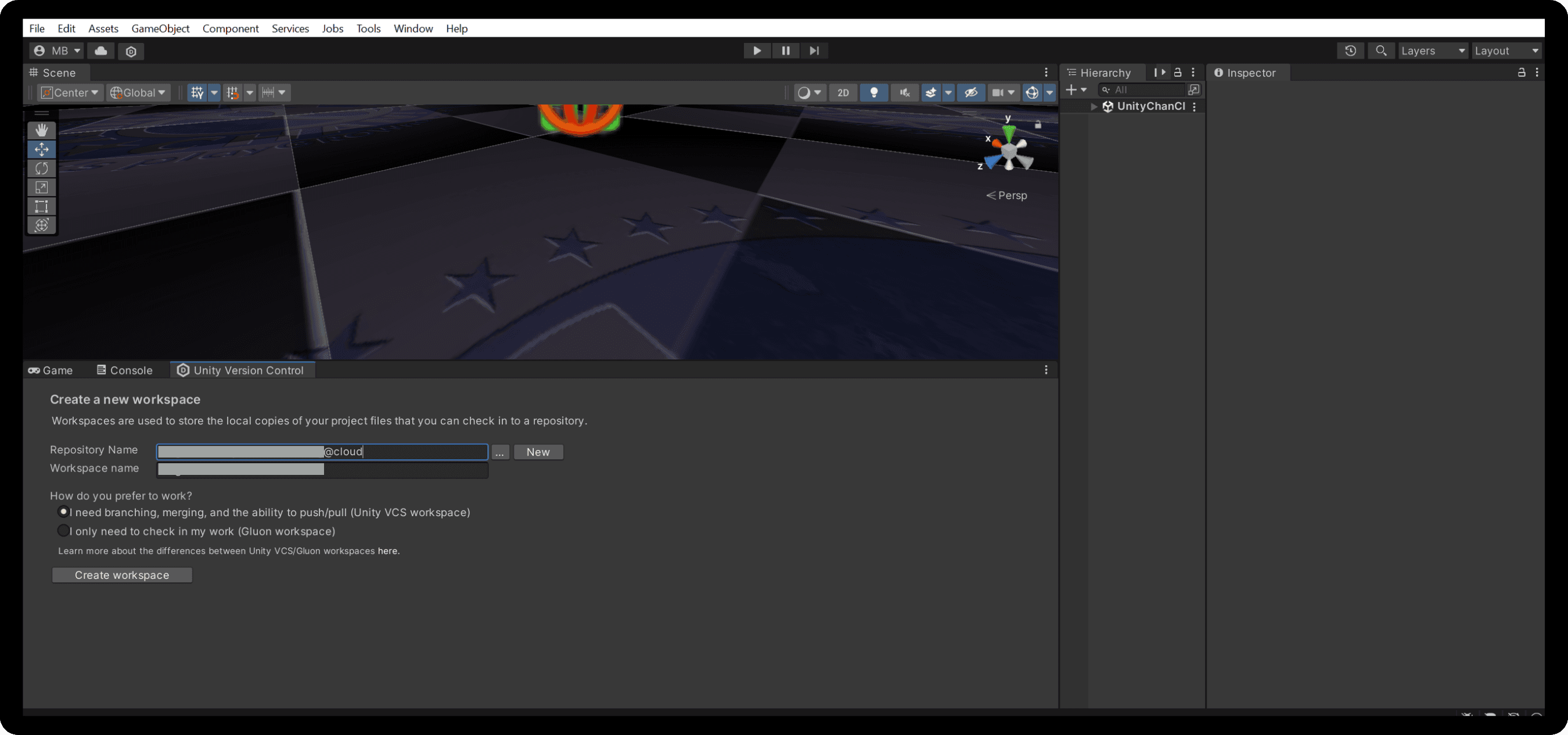
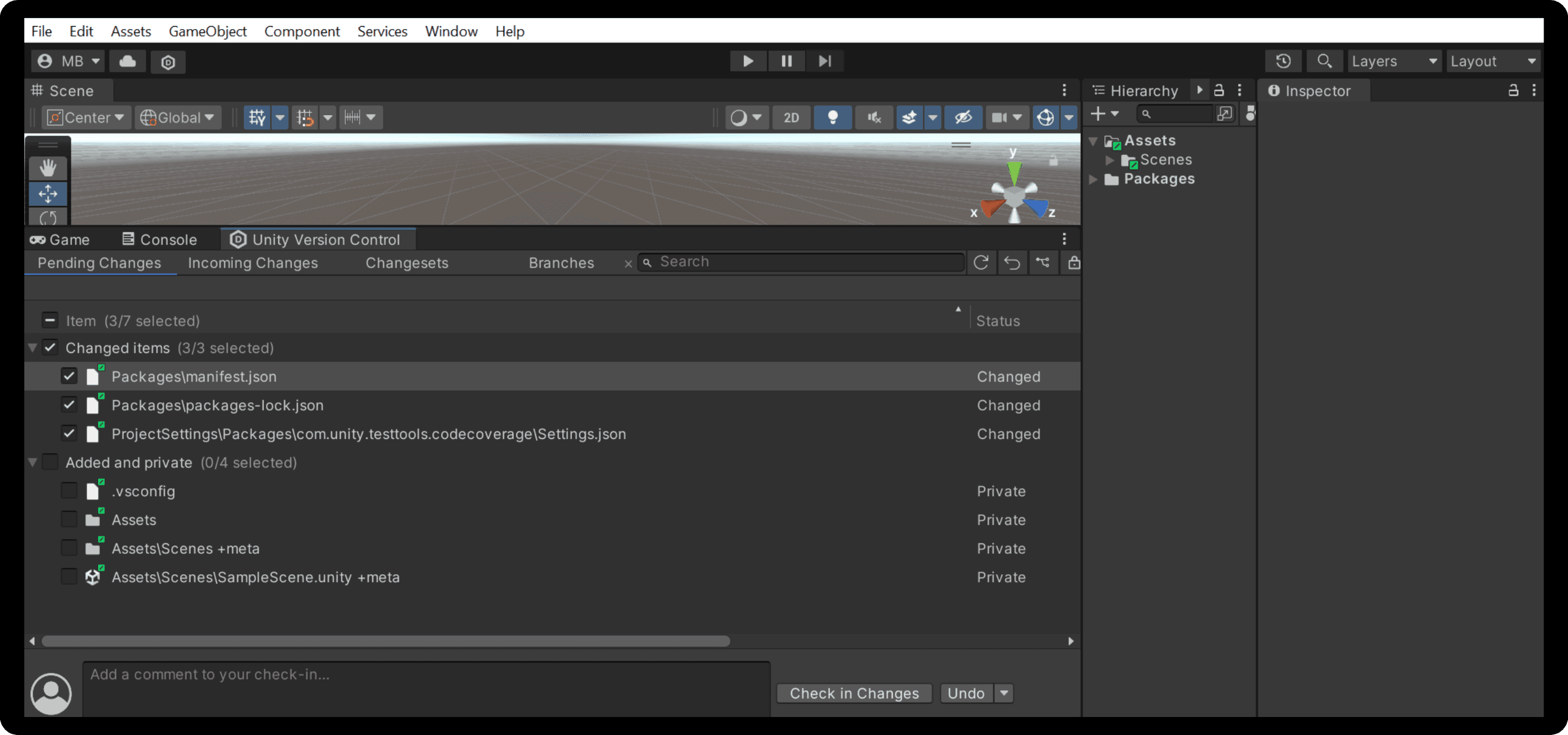
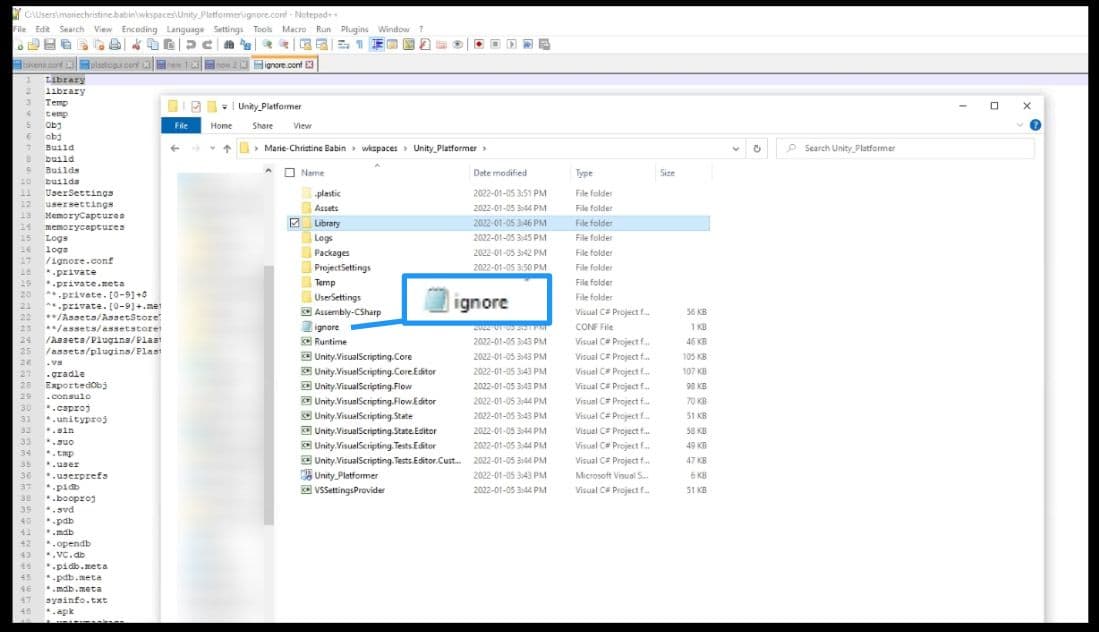
Additionally, there is a list that’s saved in the ignore.conf file at the root of the project that describes which files should be ignored by default. You can edit this to either add or exclude files from the ignore list.

Note: You may be prompted to log in with your Unity ID if you are not signed into the Unity Version Control cloud dashboard.
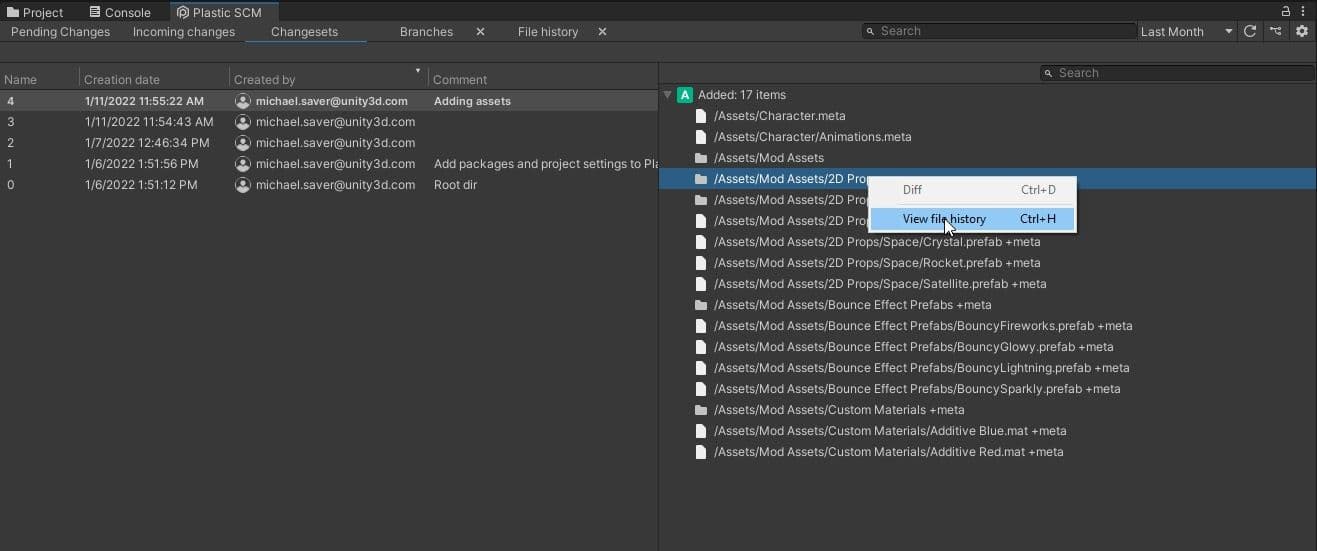
The Pending changes tab is where you will check in the changes you’ve saved to the project to send to your repository.
The Changesets tab shows you the project history of changes made to the repository and who made each change. Clicking on each listed changeset allows you to see which files were impacted by that changeset.
You can also view the history of each file by right-clicking and selecting View file history,which shows you a list of changes made to the file. You can right-click on an earlier version and select Revert file to this revision.
Whether you are using Unreal Engine, an unsupported Unity version, or another engine, you can still use Unity Version Control’s full functionality by downloading the full client.
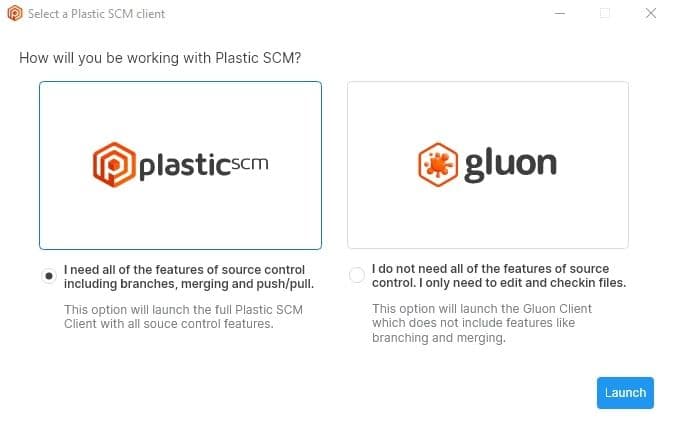
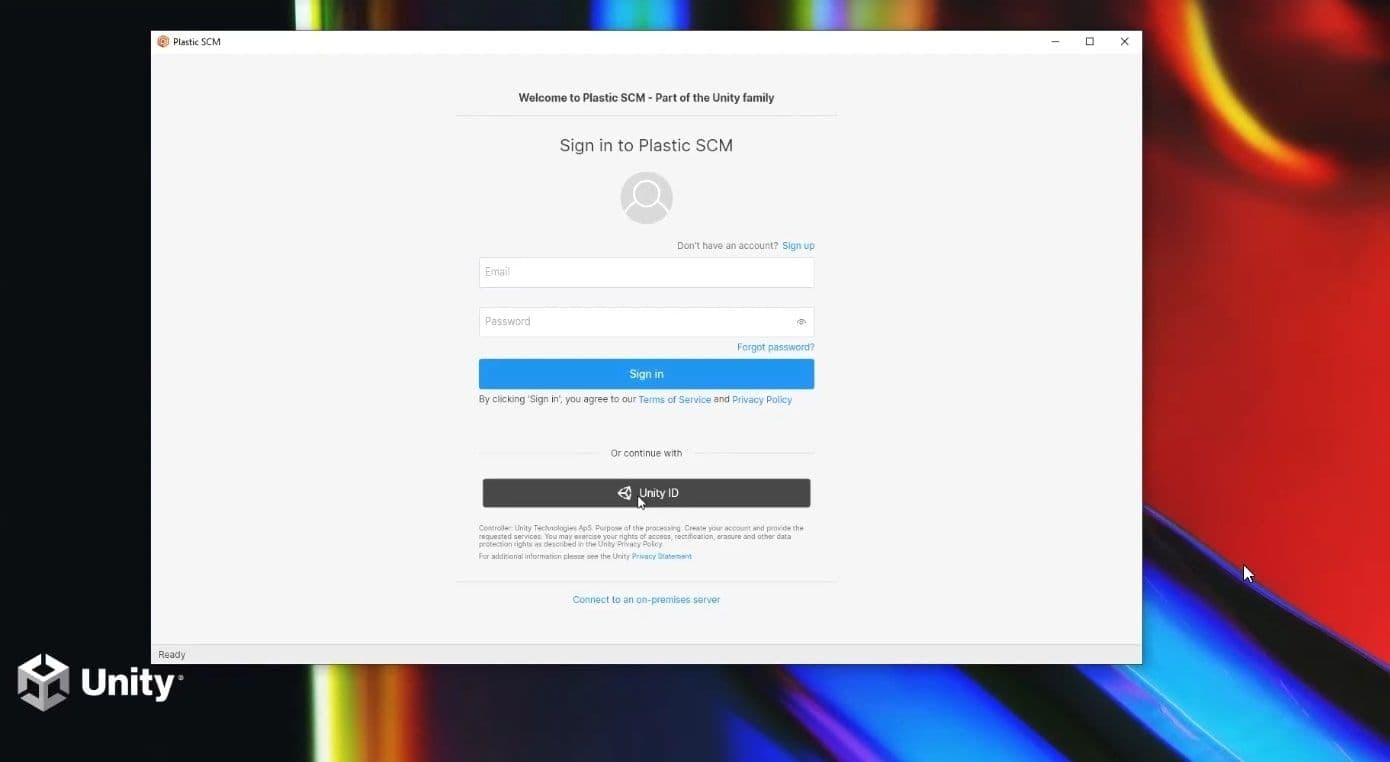
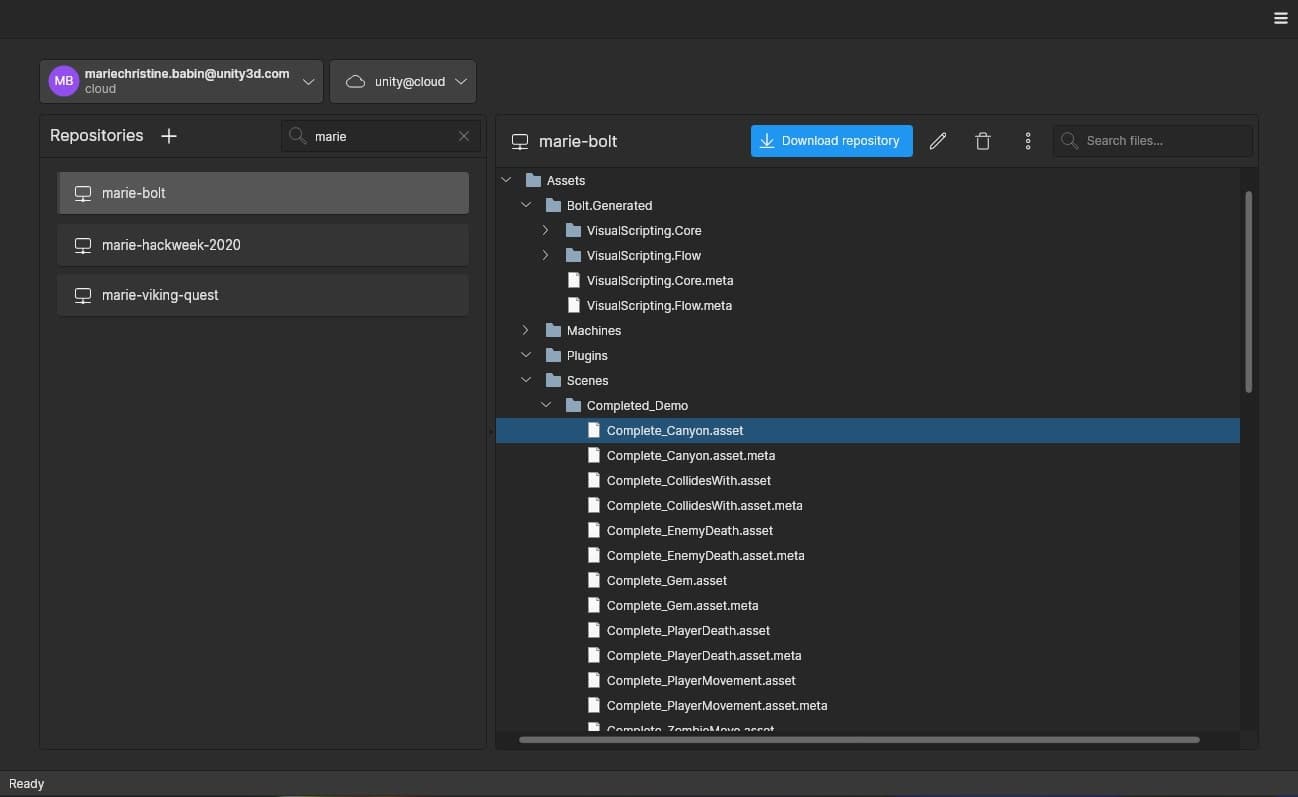
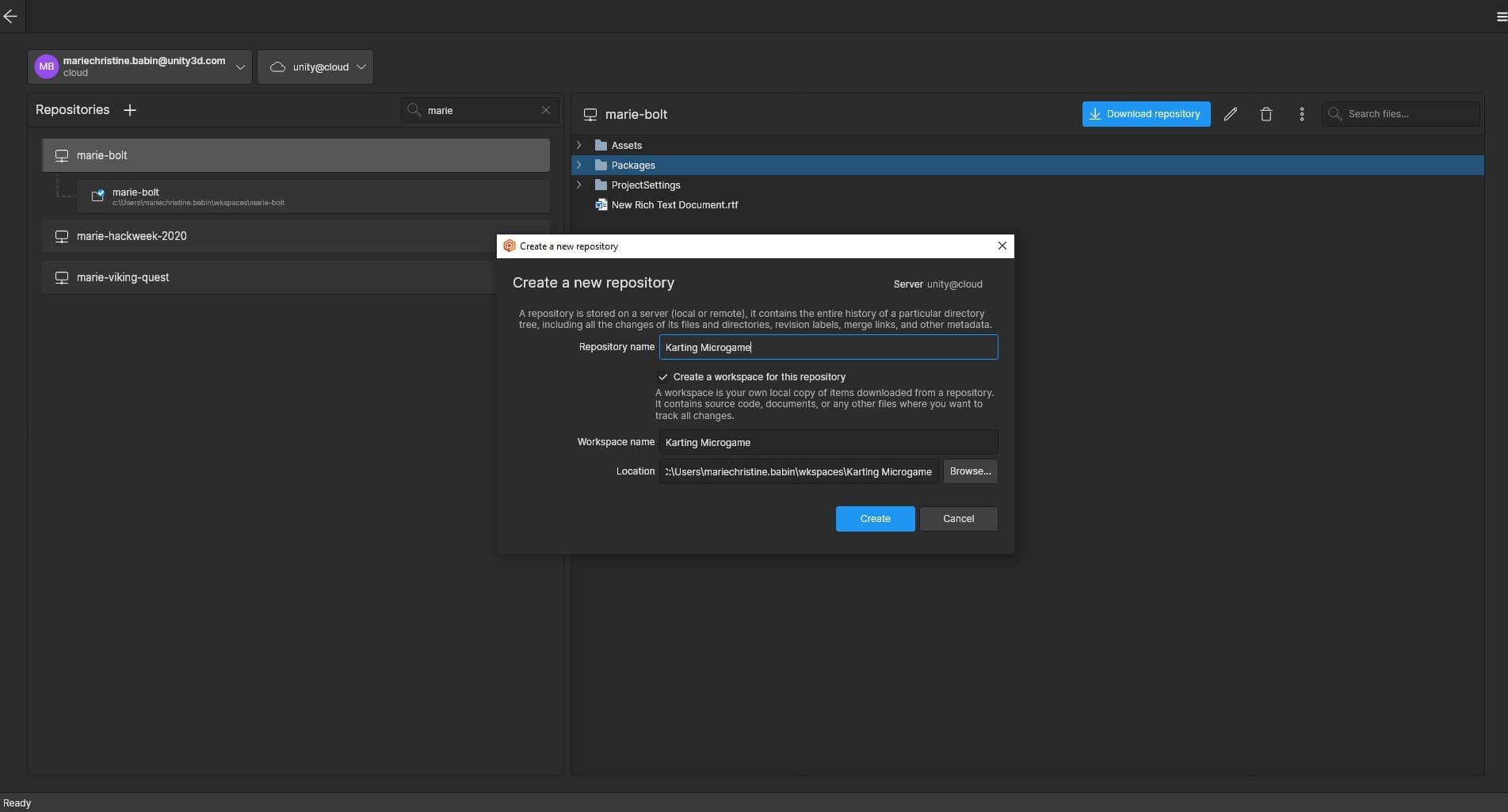
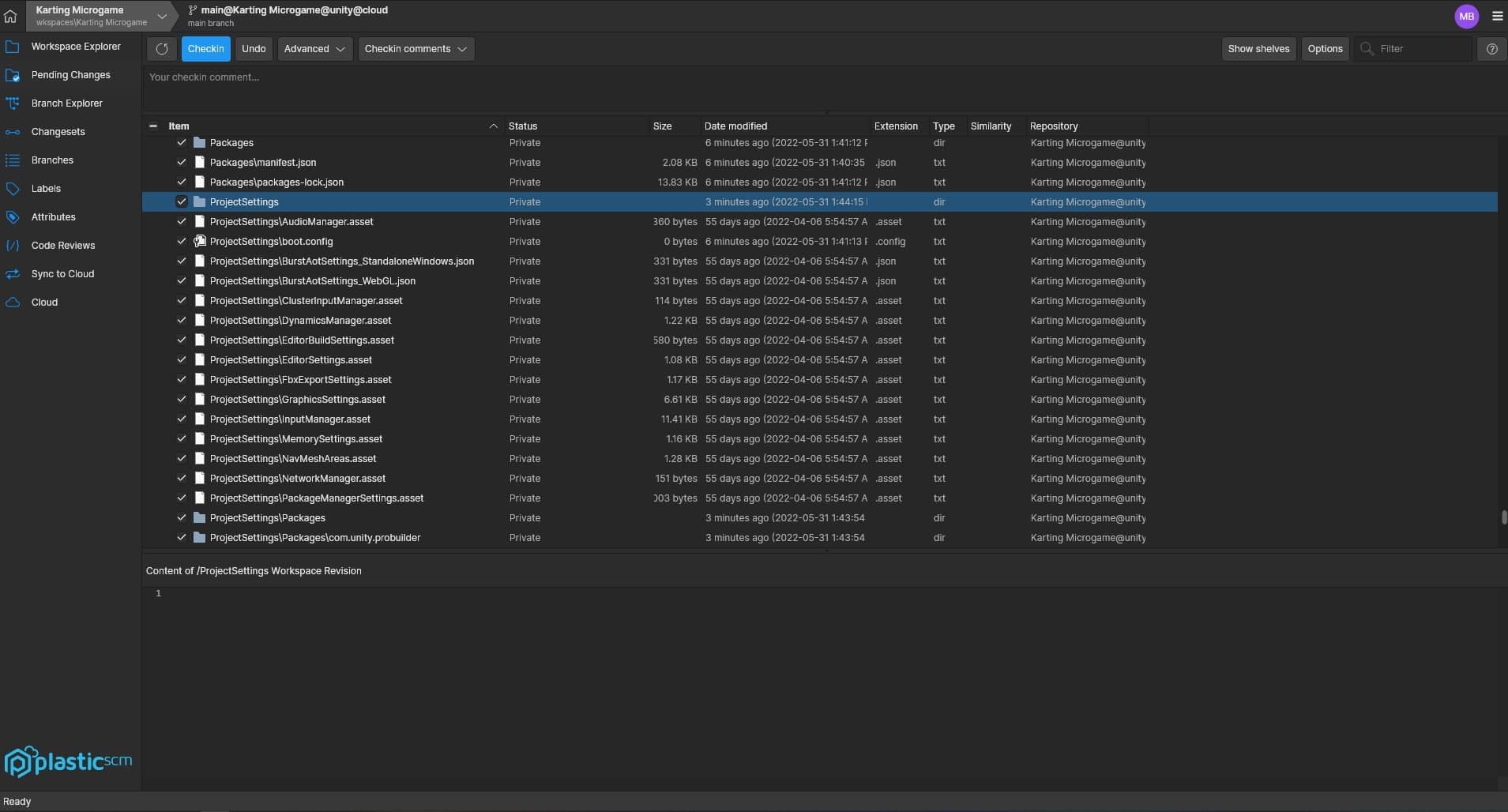
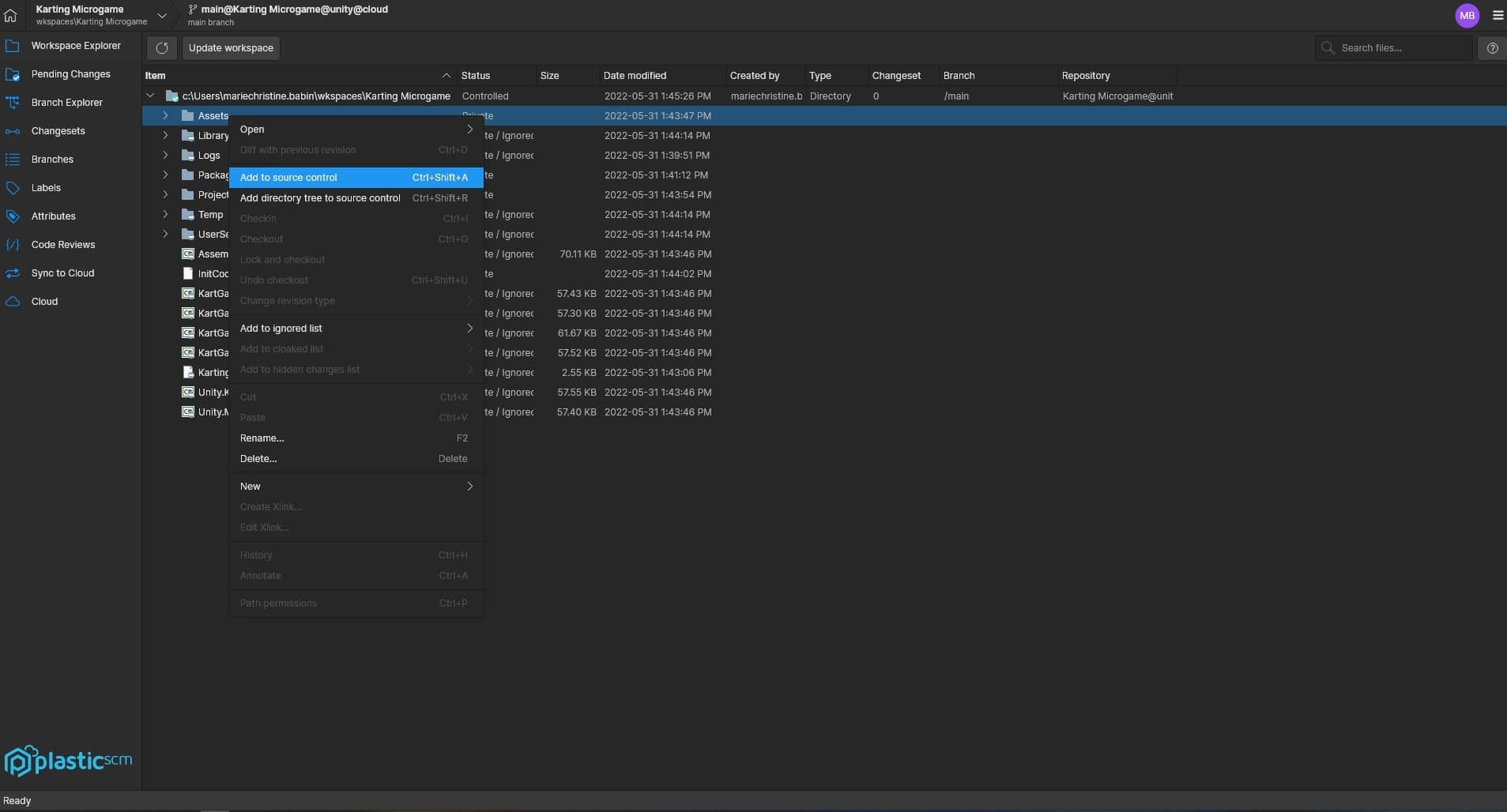
Additionally, there is a list that’s saved in the ‘ignore.conf’ file at the root of the project that describes which files are ignored by default. You can edit this to either add or exclude files on the ignore list.
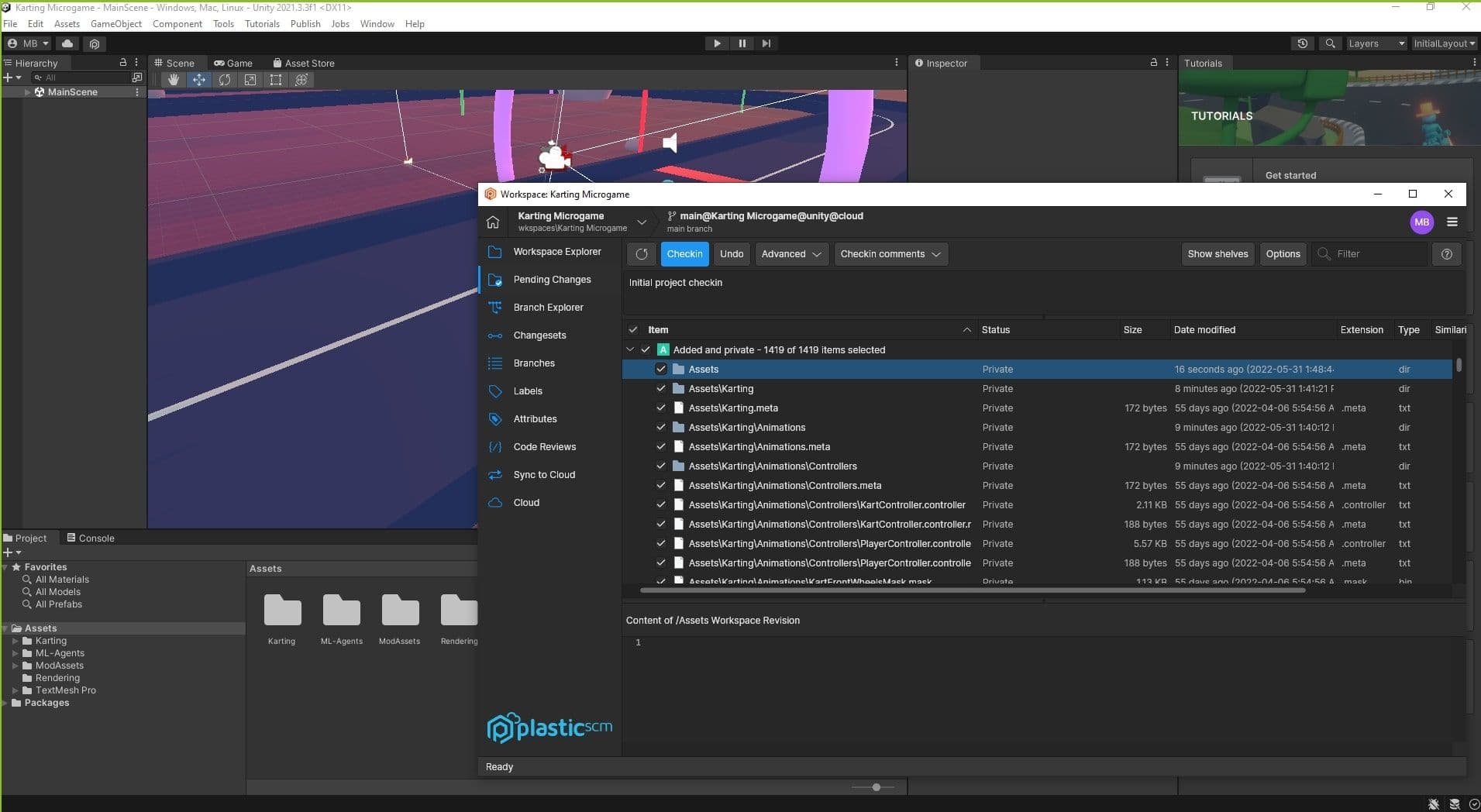
When using the standalone Unity Version Control client outside of the engine, you’ll need to Checkin changes you saved to the project using the client in a separate window.
The Pending changes tab(or Checkin changes in Gluon) is where you will check in changes you’ve made to the project to send to your repository.
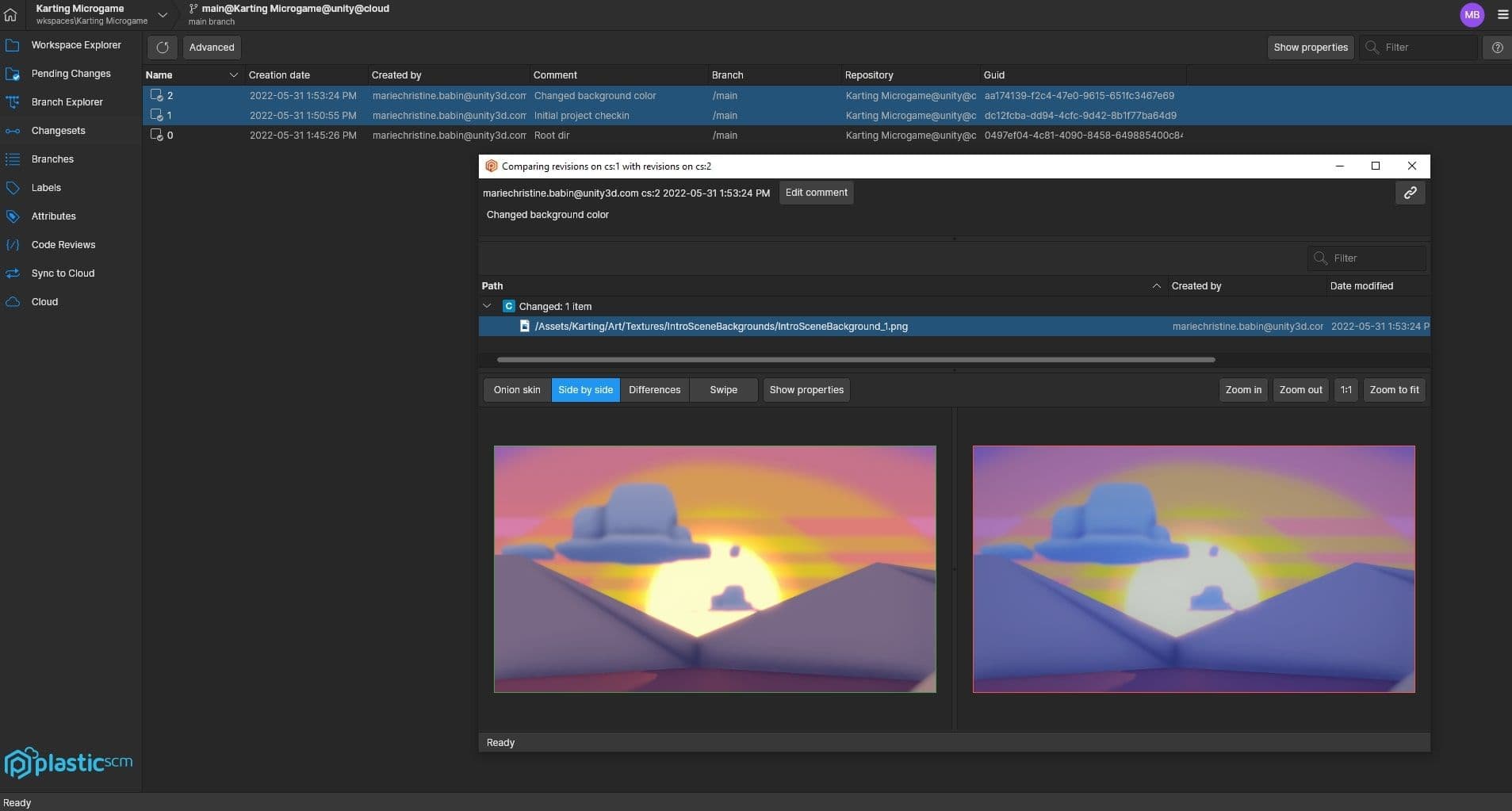
The Changesets tab shows you the project history of changes made to the repository and who made each change. Double-clicking on the changeset listed allows you to see which files were impacted by that changeset.
You can also view the history of each file by right-clicking and selecting View file history,which shows you a list of the changes made to the file. You can also right-click on an earlier version and select Revert to this revision.
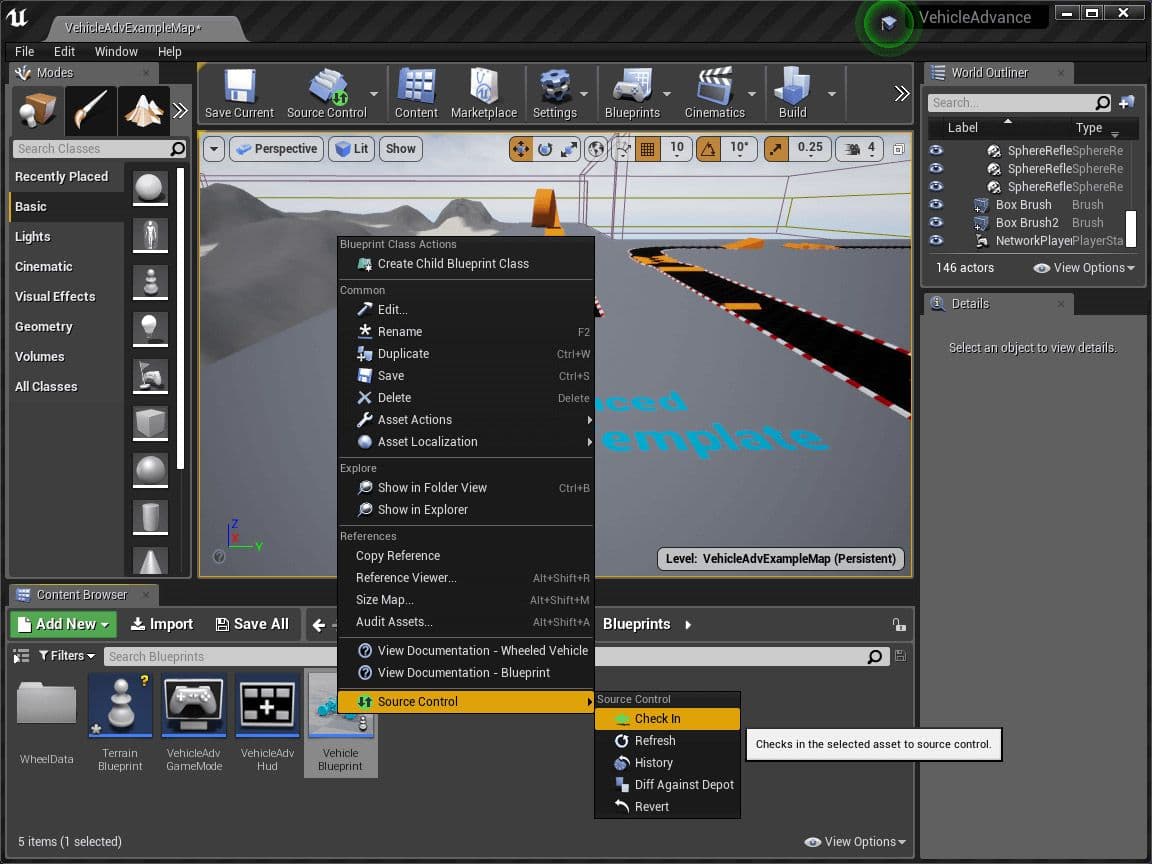
If you’re using Unity Version Control with Unreal Engine, you can use source control inside the editor without maintaining separate windows for most tasks. You can find more information on the Unreal Engine plug-in at the link below.
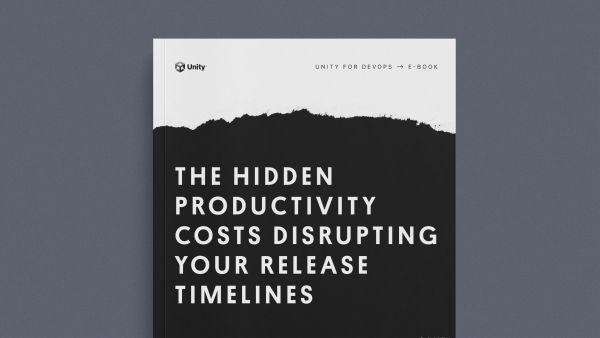
We’ve collected insights from our product and engineering teams on three of the most common version control pitfalls holding studios back from doing what they do best: creating.
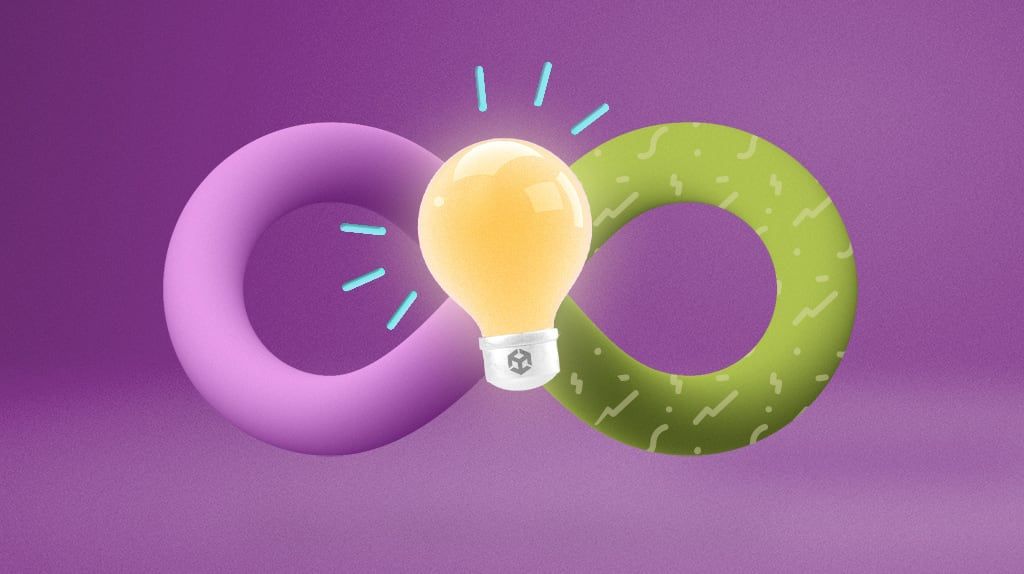
Learn how to bring a fast and flexible workflow and philosophy to your team. An efficient task branch workflow helps teams achieve speed through a continuous flow of changes.
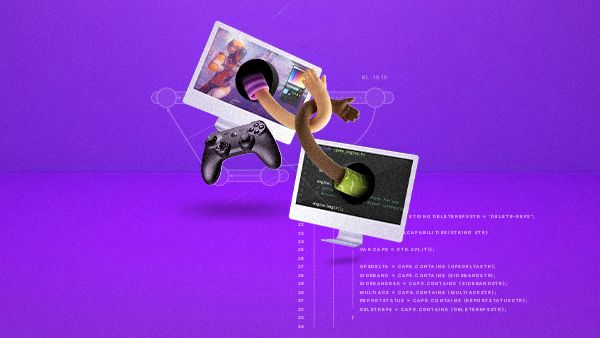
Learn the key concepts of version control as well as tips and tricks you can use when setting up your Unity project to help ensure team collaboration is smooth and efficient.